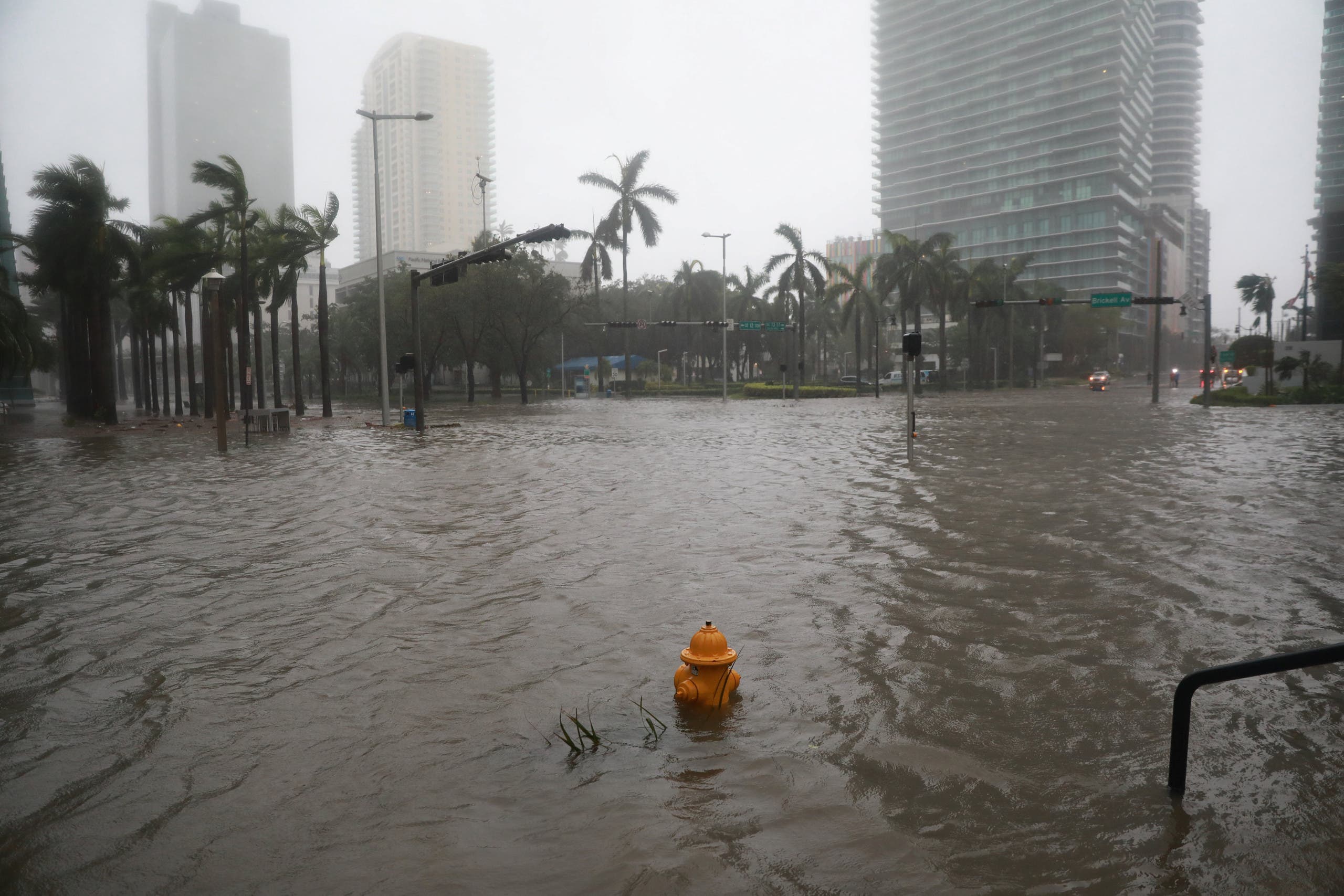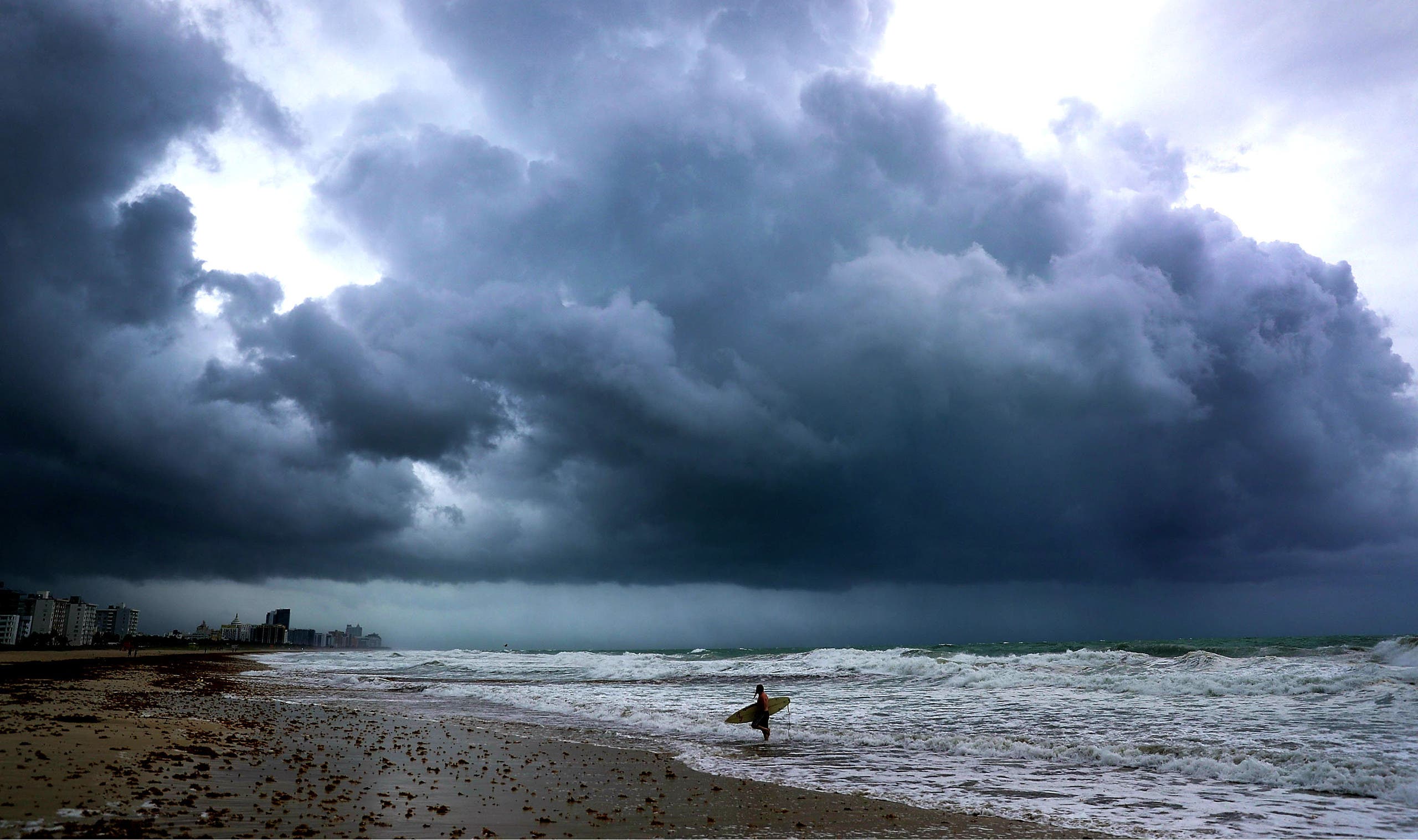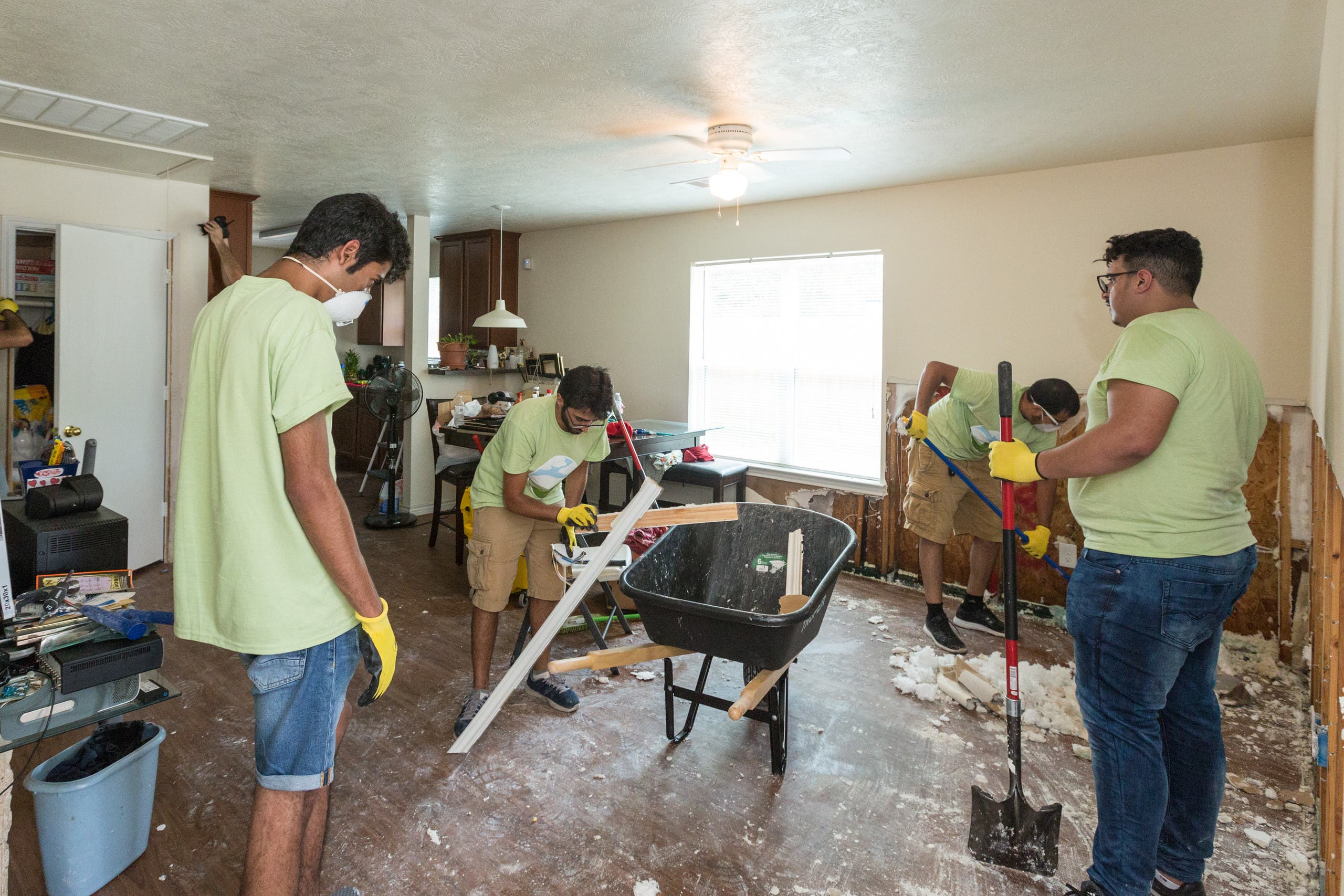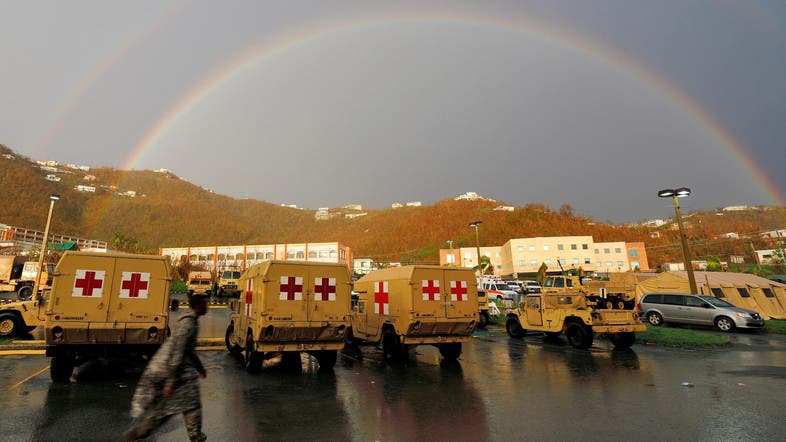A US Army soldier walks past his unit’s vehicles while a double rainbow appears in the sky in Virgin Islands on September 14, 2017. (Reuters)
This year’s Hurricane Season proved to be a destructive one with two back-to-back hurricanes, Harvey and Irma. The annual ritual of observing the June 1 to November 31 hurricane season has become less relevant over the lull of the past 12 years with limited destructive storm systems. Katrina was the last major hurricane making landfall in 2005 as a Cat 5 storm.
The massive storm left in its wake 1833 fatalities and $108 in damages. Images of Katrina came to mind as Harvey began forming in the Atlantic this August. Meteorologist started sounding the alarm bells, which intensifies as Irma started gathering strength on Harvey’s heel. The US was poised for destruction on a scale never been seen before. The nation was fixated.
As Harvey made landfall in Texas on August 26 drenching the coastline with continuous rain from Corpus Christi to Beaumont-Port Arthur over a four day period. The peak 51.88in of rain broke previous records turning parts of Houston and Beaumont cities into waterlogged islands. Boats were the main mode of transportation to rescue those who were trapped by the water.
Volunteer groups
Many of the 17,000 rescues where by boat and many of those were by self-deployed citizens who descended onto Texas from other states, near and far, to aide government rescue efforts. One such group was the Cajun Navy, an ad-hoc Louisiana based volunteer group formed first in the aftermath of Katrina, mobilized heroically despite the mounting challenges and threats. Other citizens formed long lines of with their private trucks towing boats were seen driving into devastated areas.
Each person who lived through the storm has a moving story of unimaginable hardship to tell. Americans responded by donating money and sending much needed supplies, food and water. Images of caravans descending from across the nation to help rescue flooded Houston and Beaumont attest to how deep Americans felt for Harvey’s victims.
A reported note from two children to their volunteering dad as he was heading to Houston reads “Dear Daddy: I hope you don’t get hurt, but I hope you help other people that need it more than you do. I hope no one gets hurt more. I hope everyone gets away [from] the hurricane. I love you! Scott and KaKenna.
Private citizens took it upon themselves to help, many without specific training in emergency response, but who have tools, courage and a heightened sense of responsibility. Some lent a helping hand augmenting government search and rescue efforts while others delivered food, water and basic survival items. All the while, makeshift shelters popped up everywhere; stadiums, schools, synagogues, churches and mosques.
Mustafaa Carroll of the Houston chapter of the Council on American Islamic Relations (CAIR) said “Over 25 mosques in the Houston area have opened their doors to those seeking shelter from this deadly storm.”

The crumbled canopy of a gas station damaged by Hurricane Irma is seen in Bonita Springs, Florida, U.S., September 10, 2017. (Reuters)
Muslim youth groups
Further, Muslim youth groups went out in droves to provide food and water to their neighbors. Individual initiative was made efficient by organizational support and training. CAIR held training sessions in Dallas before sending volunteers to Houston. “Saudis in the US,” a national student organization composed of Saudi students studying in the US, announced that over 140 have self-deployed under the banner “We Stand With Houston.”
Texas governor Greg Abbott declared a state of emergency prior to Harvey’s landfall triggering disaster response. He mobilized 12,000 Texas National Guardsmen and drew on the Federal Government resources. President Trump said, “We see neighbor helping neighbor, friend helping friend and stranger helping stranger. We are one American family. We hurt together, we struggle together and believe me, we endure together.”
FEMA as the lead agency for disaster response positioned itself ahead of the storm, but was quickly running out of funds. Item number one on Congress agenda coming back from their summer recess was to vote on the White House $7 billion request for disaster response.
Congress, in anticipation of great immediate need, allocated $15 billion in disaster fund to FEMA for relief efforts going beyond Harvey. Capitol Hill understands that the final clean up budget will by multiples of that amount. Some estimates put the total for both storms at $180 billion.
Celebrities, organizations and private citizens raised over $32 million by donating to the NFL Houston Texans star J.J. Watt’s crowdfunding effort who was hoping to raise $200,000 originally. Big corporation contributed more than $140 million according to the US Chamber of Commerce.

Hurricane Irma approaches on September 9, 2017 in Miami Beach, Florida. (AFP)
Devastating Irma
Not to be outdone, hurricane Irma set its sights on Florida, but not before devastating the Caribbean. By the time it hit Florida it was a Cat 4, overwhelming the Sunshine State. Weakening, yet destructive, Irma moved up north leaving a path of destruction into Georgia.
Irma earned the distinction of being equal to the most intense hurricane on record. This one-two punch, Harvey and Irma, only two weeks apart is an unprecedented occurrence since scientists started recording weather 166 years ago.
Florida ordered a mandatory evacuation of over 6 million residents making it the largest evacuation on record. Once Irma hit, President Trump issued a disaster declaration authorizing the Federal Government to deploy its resources to the affected areas including the U.S. Virgin Islands and Puerto Rico.
The seamless and expedient process from local to federal governments to congress empowered officials to take the necessary precautions and respond in an effective manner to the disaster. The collaboration between good Samaritans and first responders is credited for heroic stories of survival and humanity limiting fatalities to 81 lives.
The situation is still volatile. On Wednesday, eight senior citizens died in a nursing home due to excessive heat. Lack of electricity has kept 6.2 million Floridians without power. Heat is one immediate threat to the very young and the elderly. Parts of central and south FL are expected to have temps in the 90s for the next few days. As residents start trickling back to their homes to assess and rebuilt are aware of the risks.

A who’s-who A-list celebrities came together on Monday over a Hand-in-Hand telethon raising over $45 million dollars for hurricane relief. (Al Arabiya)
Long road to recovery
Relief efforts continue. Americans are showing their concern for the victims even though the news cycle has been replaced by other pressing issues. Relief organizations are holding training session to send volunteers to help rebuild. It will take Texas and Florida a long time to fully recover, perhaps years. A who’s-who A-list celebrities came together on Monday over a Hand-in-Hand telethon raising over $45 million dollars for hurricane relief.
The five living former US presidents launched the “One America Appeal” to raise money for storm recovery. Food banks around the nation are receiving non perishable items. Religious organizations are collecting much needed personal items and supplies. Individuals and organizations donating money to recovery funds.
This hurricane season is not over yet. Meteorologist have been warning of progressively intensifying weather systems going forward as global warming adds more moisture in the air and increases temperatures, which fuels storms. The direct fallout can be measured in dollars and not only in meteorological statistics and colorful infographics. Harvey and Irma’s economic impact on this quarter’s GDP will be mild.
Economist expects an overall 0.3 percentage points loss to the seasonally adjusted annualized growth. Yet, a higher toll, in life and treasure, will be paid less a serious strategy is put in place to slow down human activities contributing to these destructive systems.
_________________________
Walid Jawad is a former Senior Policy Analyst at U.S. Department of State and a former Washington, DC correspondent. He covered American politics for a number of TV outlets since 1997. Walid holds an undergraduate degree (B.A) in Decision Science and Management Information Systems and a Masters in Conflict Analysis and Resolution. You can follow him @walidaj.
Walid Jawad is a former Senior Policy Analyst at U.S. Department of State and a former Washington, DC correspondent. He covered American politics for a number of TV outlets since 1997. Walid holds an undergraduate degree (B.A) in Decision Science and Management Information Systems and a Masters in Conflict Analysis and Resolution. You can follow him @walidaj.
Last Update: Friday, 15 September 2017 KSA 14:08 - GMT 11:08



No comments:
Post a Comment